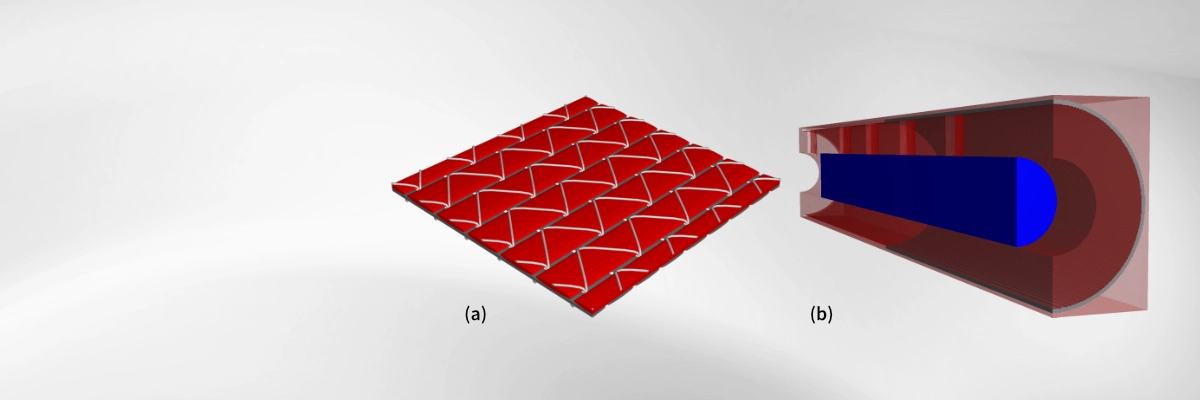Editing of Analytic Object-Data and Creating of 3D Images
GadGeo
This module is the GeoDict solution for CAD (Computer-Aided Design) of microstructures. With modules like FiberGeo and GrainGeo it is possible to create complex random geometries composed of thousands and thousands of grains and/or fibers. For such structure models it is not feasible to place all objects by hand and thus automatic algorithms to get the desired statistical properties, like the fiber orientation tensor, are used.
However, if one wants to design simpler analytic models like grids, or if one wants to edit an existing complex microstructure, GadGeo is the perfect tool for this task. It has limitless possibilities to tailor the geometry models to your needs.
For all material models in GeoDict the geometry is described by analytical objects like spheres, cylinders and more complex shapes. This analytical data is called GAD, short for GeoDict analytical data. These analytical objects can be edited, added or deleted with GadGeo. The GAD in GeoDict is always transformed into a 3D image based on voxels in a region of interest (domain), with a given resolution. This voxelization process can also be controlled in GadGeo.
The Create / Add GAD Objects feature enables the free construction of voxelized 3D geometries using predefined analytic objects. Analytic objects can also be added to existing geometries—such as those generated with FiberGeo or GrainGeo—to analyze their impact on the resulting 3D structure.
The Edit GAD Objects function allows modification of all analytic objects within any GeoDict geometry. For example, to adjust a specific fiber in a FiberGeo model, simply select the fiber and update its properties—such as diameter, orientation, or position.
The options Scale GAD Objects, Shift GAD Objects and Rotate GAD Objects allow to change the size, the position and the orientation of all GAD objects within any GeoDict geometry.
With Resolve Overlap / Mark Contacts it is possible to resolve the overlap of all given analytic objects. Additionally, one can give all the object contacts in the voxel image a specific material, e.g. to weaken the contacts in a mechanical simulation with ElastoDict.
The Change Material ID Model feature allows the assignment of multiple material IDs within a single analytic object, enabling the modeling of complex internal structures. This is particularly useful for representing features such as layered fibers or striped grains, where distinct material phases exist within the same object.
With Delete Selected GAD Objects you can delete all analytical objects of a given type, or all objects which have the same material ID / material.
The Edit Domain feature enables precise control over the region of interest used for voxelizing analytic data. Users can modify the domain’s resolution, origin, and boundary conditions (periodic or non-periodic), as well as define object overlap rules to govern how analytic objects interact within the domain.
The Create GAD Index Image option generates a 3D image in which each voxel is assigned the ID of its corresponding analytic object. This voxel-level labeling enables detailed analysis of individual object properties such as volume, surface area, and inter-object contacts.
Add objects from a file to the current geometry using the option Add GAD Objects from File.
To load GAD data into GeoDict is a base feature, however using Import GAD Objects from File one has additional options on how to import the analytical objects, e.g. it is possible to rotate the objects during the import.
Export as GAD Objects can export streamlines, filtered particles and particle trajectories, simulated with GeoDict, as analytic objects and surface triangulations.
Furthermore, there are a lot of algorithms to work on analytic object data. Examples are: Remove Object Overlap, Expose Periodic Objects and Combine GAD Objects.



